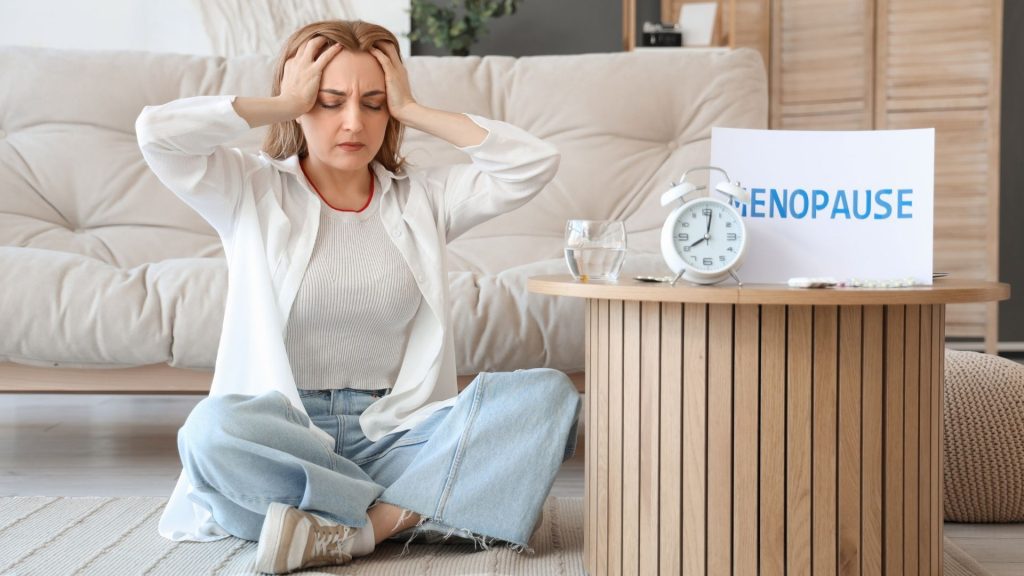Ah, menopause, the grand finale of your reproductive years and the curtain-raiser to a new (and sometimes bewildering) chapter of life. Sure, it’s a milestone, but who ordered the hot flushes, night sweats, mood swings, and brain fog buffet? And just when you think you’ve got the hang of the whole “being human” thing, here comes the saga of changes to your pelvic floor.
Now, don’t get me wrong, menopause is not all doom and gloom but for a lot of women, it can throw some curveballs, including those at the very foundation of your pelvic health. We’re talking discomfort, pain with intimacy, and—wait for it—urinary incontinence. Fun, right? But before you start panic-Googling or stocking up on pads, here’s the good news: you can take charge and turn things around.
What’s the Deal with Your Pelvic Floor During Menopause?
Let’s break it down: your pelvic floor is like the unsung hero of your anatomy—a hammock of muscles, ligaments, and tissues keeping your pelvic organs in place. But with menopause, your body’s estrogen levels nosedive faster than a kid avoiding broccoli, and that’s when the trouble starts.
Estrogen is the glue, moisturizer, and superhero of pelvic tissue health. When it takes a backseat, your vaginal and urethral walls get thinner, the muscles lose tone, and collagen production goes on holiday. The result? A pelvic floor that feels like it’s trying to retire early.
Weakened support can lead to some not-so-fun conditions like urinary incontinence or pelvic organ prolapse (POP). Think of it like a dodgy suspension bridge: the structure’s still there, but it’s not holding up like it used to.
The Usual Suspects: Pelvic Floor Challenges During Menopause
Menopause isn’t playing fair, and it helps to know what you’re competing against. Here’s what might pop up:
- Urinary Incontinence: That sneaky drip when you sneeze, cough, laugh, or (gasp!) exercise? Yep, it’s a classic sign.
- Pelvic Organ Prolapse (POP): The bladder, uterus, or rectum might start making unwelcome guest appearances in the vaginal canal. Symptoms? Heaviness, pressure, or a visible bulge. (Nobody signed up for that drama.)
- Genitourinary Syndrome of Menopause (GSM): Vaginal dryness, burning, itching, recurrent UTI’s, and a serious lack of comfort during intimacy—because menopause really likes to keep things spicy (just not the way we want).
Notice any of these symptoms? Keep reading…
How to Show Your Pelvic Floor Who’s Boss
First things first: you don’t have to put up with this. There are plenty of ways to tackle these challenges, and they don’t involve locking yourself in the bathroom with a bag of chocolate.
-
-
- Cut the late-night beverages: Less liquid before bed = fewer midnight bathroom trips.
- Ditch the bladder irritants: Caffeine, alcohol, and fizzy drinks? They’re bladder bullies. Cut back on them and if you do have them, drink them for earlier in the day.
- Try Emsella sessions: Don’t want to do the work yourself? The Emsella chair uses some fancy-pants tech to strengthen your pelvic floor muscles while you sit back and relax. Seriously, it’s like a spa day for your pelvic floor.
- Master the Kegel game: But don’t just wing it – get a pelvic floor physiotherapist to coach you on engaging the right muscles. Spoiler alert: you might have been doing it wrong this whole time.
-

Join the Movement (Literally and Figuratively)
Menopause may bring its challenges, but you’re not in this alone. As a physiotherapist with years of experience helping women regain control and confidence, I’ve seen firsthand how empowering the right support can be.
Want to laugh, learn, and take charge of your pelvic health? Come hang out with us on Instagram at @thewellnessedgeoz or on Facebook at @thewellnessedgeoz. We’re building a community of incredible women and proving that pelvic floor issues don’t stand a chance when we’ve got each other’s backs.
Let’s take on menopause together – pelvic floors and all. You’ve got this, and we’ve got you.

